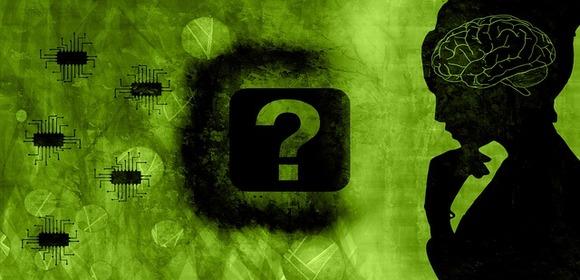Decision Science vs Data Science (Updated in 2025)
Overview
Data science has become well-known both as a career and as a method for making data-driven decisions. However, when it’s time to make decisions in real life, we often lack the data or data model on which to base certain decisions. This is where decision science comes into play.
Data science is focused on extracting actionable insights from data, but decision science is more multifaceted. It combines statistical techniques, ML, behavioral psychology, economics, and other disciplines to help improve decision-making. In this article, we explain why there is a growing interest in decision science before diving into our interview with a decision scientist.
What’s Behind the Growing Interest in Decision Science?
In 2018, Google added the position of chief decision officer, underscoring the growing importance of this field. Similar positions and roles can now be seen in other companies, and this is because:
- Business problems are difficult to answer, especially when dealing with multiple confounding variables.
- It’s challenging to decide the best path forward using only data.
For example, at your typical FAANG company, there is a need to make marketing decisions while measuring marketing success to help the marketing team allocate its budget. Solving this using traditional tools alone is hard. A decision scientist must design a randomized controlled trial (RCT) to determine the value of different channels to optimize the budget allocations.
Interview with A Decision Scientist
In this section, we sit down with Sandeep Gangarapu to discuss decision science. Sandeep is a sixth-year PhD candidate at the University of Minnesota studying Information and Decision Science. He’s also a former Google Search analyst, and we ask him to share his thoughts on this field, his research on advanced A/B testing techniques, and the future of decision science.
What types of questions are researched in decision science?
The Information and Decision Science Department at the University of Minnesota started in 1970. This was around the time technology was beginning to replace certain processes in many companies. Researchers were curious how people were using technology to make decisions and how this was affecting human and organizational behavior.
A simple way to understand decision science is by comparing it to causal inference.
For example, researchers can pose a question such as, “Is email a good or bad thing?” On one hand, it facilitates fast, asynchronous communication and information sharing. However, it could distract employees during work hours or interfere with their work-life balance. To answer this, you can try to causally measure the effect of X on Y while studying the underlying theory driving the decision-making. However, it’s difficult to causally attribute whether an email is good or bad based on data alone. This is where decision science comes in. Researchers in this field try to answer these types of challenging economic and social science questions by looking beyond data.
Currently, there’s a lot of research on how online platforms influence our decisions, plus the impact information systems have on society and policy. There’s also a gradual expansion into other areas, such as my work on multi-armed bandits and heterogeneous treatment effects in A/B testing.
Your research has focused on A/B testing and multi-armed bandits. What sorts of insights are you uncovering?
My thesis’s main focus is on how companies can better use A/B testing. The motivation came from asking ourselves the question:
“We know that A/B testing works and can help companies innovate really fast, so why isn’t every company doing it? What’s preventing people from getting there?”
The first insight I uncovered had to do with company size. Many smaller companies lack the capacity and skilled personnel needed to conduct A/B testing. Another key hindrance I found was that many companies don’t have an experimentation culture. Decisions are simply made by the highest-paid person in the room, and testing a change before rolling it out would be a significant paradigm shift. Cost is another bottleneck because setting up the infrastructure needed for testing, running the tests, and analyzing results is costly.
In my research, I’m trying to address these problems and provide methods to soften the hindrances. One approach has been to squeeze more utility (and profit) from experimentation. We have simple frameworks that use advanced techniques, making things more approachable. The framework we developed to solve the problem above combines A/B testing, optimization, and machine learning. This framework is easy for companies to understand and implement and can be easily shared with stakeholders.
What about multi-armed bandits?
Multi-armed bandits are actually the main focus of my research. These are “smarter” or more complex versions of A/B testing, which use machine learning algorithms to dynamically allocate more traffic to variations of the test performing well and less traffic to the underperforming ones.
The obvious problem is that for companies already struggling to implement A/B testing, implementing multi-armed bandit solutions will be an even bigger challenge. However, these kinds of tests can overcome this because they are utility (profit) maximizers.
In our case, we developed a hybrid algorithm that can trade off some utility to maximize inference on how different variants perform. Although a standard bandit algorithm has good utility, inference can be tough because of the adaptive allocations. The algorithm doesn’t result in the same concrete statistical evidence you get with A/B testing. Trading off some of this utility and getting a lot of inference in exchange is a good way to enjoy the best of both worlds.
Have there been any challenges in transitioning from data science to decision science?
I think I’m in a slightly better position than my peers in decision science because of my research work in machine learning and my coding experience at Google. However, in the decision science program, we are mostly trained on causal inference concepts, which may make it harder to secure positions that require solid coding skills, such as in applied or research science.
And in interviews?
I’ve definitely had to learn how to switch from a research mindset and become a more efficient problem solver when going into interview scenarios. In the past, I would jump right to solving a question given in an interview without pausing to think, just so I could provide an answer.
Practicing on many mock interviews helped me to make the switch. The practice taught me the importance of taking a step back, asking questions, getting clarifications, and working through the solution step by step with the interviewer until we arrived at the answer together.
Why did you choose to pursue a PhD in decision science instead of a master’s in data science?
When I was working at Google, my intention had been to get a master’s in data science. I didn’t even consider getting a PhD until I spoke to a former colleague who was in the Information and Decision Sciences program at CMU. I think what got me hooked was the depth of the learning and the opportunities I’d have access to once I finished the program.
You can complete a master’s degree in a year and have good baseline knowledge, but there’s a risk of hitting the ceiling of your skills just a few years after graduating. With the PhD program, I figured I’d need at least three years more than a master’s, and I’d have the chance to do in-depth research and really build up my expertise. But it’s also a very personal decision because a PhD is a huge investment and a major life decision.
Will the decision scientist’s role become more common in business? Do you think it makes you more competitive when applying for data science jobs?
At the moment, I’m not sure a PhD in decision science makes a candidate more competitive, but I’m also seeing more tech roles where PhDs in various disciplines are listed in the job description.
As for decision science’s place in the market, I think companies are realizing that many things are hard to measure, and this limits their ability to make data-driven decisions. People trained in decision science have the necessary skills to approach these problems and determine the best way forward. Once many machine learning problems and frameworks are standardized, the differentiating factor is likely to be the ability to solve hard problems with not-so-obvious solutions. Decision scientists will be perfectly positioned for this.
Conclusion
Data science has been at the forefront of decision-making and seems to grab all the headlines. However, data-driven decisions have their limits; hence, the need for decision science. Decision science enables companies to take data into consideration but also allows them to look beyond it so they can make optimal choices based on more information. Although it’s a relatively new field, some major companies are already hiring decision scientists, and some data scientists have started the shift to this career path.
The world of data-driven careers has become more dynamic, and Interview Query can help you navigate the different roles you may consider when thinking about a career. We provide resources designed to guide you when interviewing for data roles, including company interview guides for data scientists, analysts, and engineers. We also have guides for related positions, such as research scientists, business analysts, and product analysts. You can check out our question bank to see which interview questions you may be asked for different roles or visit the salaries section to compare how each role pays.
If you’ve been curious about why decision science exists, we hope this interview has shed more light on this emerging field.

